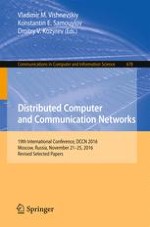2016 | OriginalPaper | Chapter
Performance Modeling of Finite-Source Cognitive Radio Networks Using Simulation
Authors : Janos Sztrik, Tamás Bérczes, Hamza Nemouchi, Agassi Melikov
Published in: Distributed Computer and Communication Networks
Publisher: Springer International Publishing
Activate our intelligent search to find suitable subject content or patents.
Select sections of text to find matching patents with Artificial Intelligence. powered by
Select sections of text to find additional relevant content using AI-assisted search. powered by
